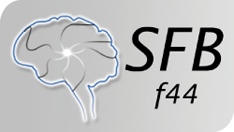Alzheimer's disease
Alzheimer's disease (AD) is an irreversible progressive disorder that causes memory loss and disrupts cognition and other brain functions. AD and other forms of dementia affect more than 36 million people worldwide: AD International estimates that the number of people living with dementia will increase to 66 million by 2030 and 115 million by 2050. According to the World Health Organization (WHO), every four seconds a new case of dementia is recorded worldwide, which is three times as many as for HIV/AIDS. AD is the most common type of dementia, first identified in 1902 by the German psychiatrist and neuropathologist Alois Alzheimer. Today an estimated 5 million people aged 65 and older are affected by AD and approximately 200,000 patients younger than 65 suffer from presenile AD. Although the disease strikes both sexes, the prevalence of AD is higher in women than in men: In Austria 74.1% of Alzheimer patients older than 60 years are female. Varying life expectancy might be responsible for this finding, most likely as women generally live longer than men.
The majority of AD cases (>95%) are sporadic and develop at an age of >60 years and only a minority have a genetic disposition. AD develops slowly and gets progressively worse, due to synaptic loss and neuronal cell death. The pathophysiology of the disease has not been fully understood and the neuropathological hallmarks are variable. They include extracellular beta-amyloid plaques as well as intraneuronal Tau neurofibrillary tangles that develop in the hippocampus and cortex, which are human brain structures responsible for the consolidation of memories and learning. Whether these degenerative changes cause AD or whether they are accompanying features remain still unclear. Most experts agree that AD develops as a result of multiple risk factors and is probably determined by environmental and genetic components. In the primary stage of AD, mainly the short –term memory starts to fade, but later also the ability to carry out routine tasks worsens. As AD disseminates through the cerebral cortex, cognitive function declines in multiple domains, which in turn leads to a complete brain failure.
Worldwide, researchers are investigating numerous new disease-modifying treatment strategies in various stages of clinical trials, but currently there is no therapy available to slow or alter the progression of AD, nor to cure the disease. Currently, modern treatments predominantly offer a weak symptomatic benefit: drug and non-drug treatments may help to improve the lives of patients with dementia, their families and caregivers. However, these treatments also come with sometimes intolerable side effects. In developed countries, AD is one of the most costly diseases to society and these costs will increase as the world population ages rapidly.






